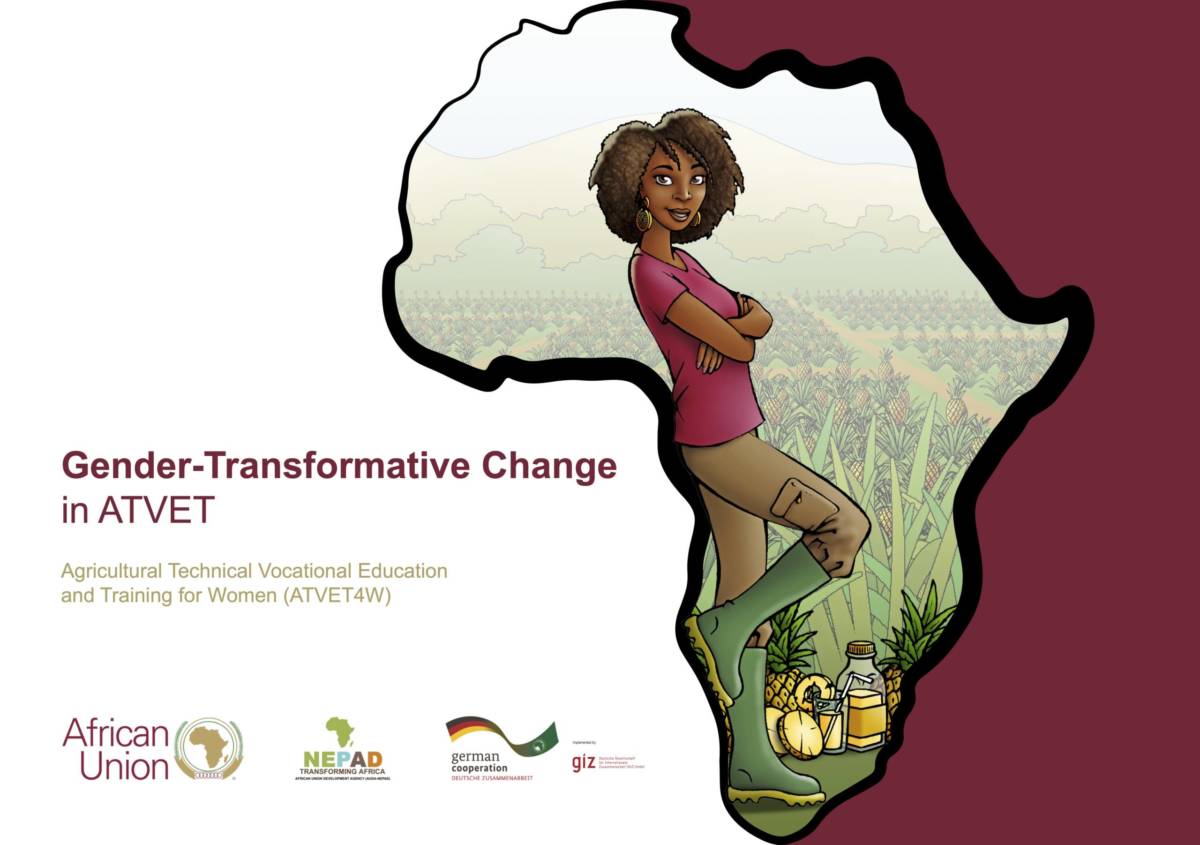Gender-Transformative Change in ATVET
New booklet highlights the journey of the ATVET4W project towards women’s empowerment — conceptual framework and practical examples of approaches
Visual: © GIZ South Africa
“Women are the backbone of Africa’s agricultural sector!” — How many times have you heard this? The experts keep on highlighting the critical importance of women for the agricultural workforce and rural development. But these insights usually don’t translate into any kind of tangible action. If development projects — especially those focusing on agriculture and training — continue to fail to zoom in on women, the continent’s agricultural and economic transformation agenda is unlikely to succeed.
About the Agricultural Technical Vocational Education and Training for Women project
The African Union Development Agency (AUDA-NEPAD) implements the ATVET4W project in Benin, Burkina Faso, Ghana, Kenya, Malawi and Togo. GIZ supports it technically and financially through its steering base in South Africa, the home of AUDA-NEPAD.
Within GIZ, ATVET4W is the only GG2 project in agriculture and Technical and Vocational Education and Training (TVET). Since the project’s inception, the GIZ technical team has been working on defining what this mandate means. For the project team, it means to strive to gender transformation to achieve gender equality and women’s empowerment. This mandate is clearly outlined in BMZ’s Development Policy Action Plan on Gender Equality 2016 – 2020 (Gender Action Plan = GAP II): “the BMZ pursues a transformative gender approach, which means we actively question and critically analyse established norms and gender stereotypes and focus on dismantling existing structural inequalities” (GAP II, pg.7).
ATVET4W aims to increase women’s access to ATVET systems — formal, non-formal and informal competency-based training along selected agricultural value chains. However, the project takes it a step further. For women to be truly empowered, it is not enough to increase women’s access to skills development. Women need to benefit from the training — for example, through increased income – and they also need decision making power over this new income. Rather than only measuring how many women have been trained, ATVET4W questions established norms and gender stereotypes to dismantle existing structural inequalities, as outlined in GAP II. One example is the “Women in the Driving Seat” tractor training initiative in Ghana that seeks to open access for women in traditionally male-dominated areas like mechanised agriculture.
The booklet on “Gender-Transformative Change in ATVET” highlights our journey towards women’s empowerment. Since 2017, the ATVET4W project has been working both on a conceptual framework and on practical examples of gender-transformative approaches. Happy reading! We would welcome your feedback!


